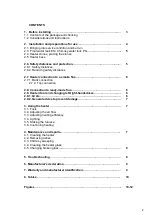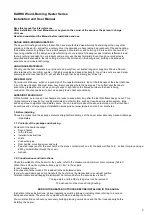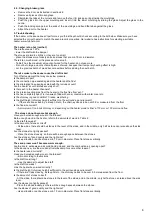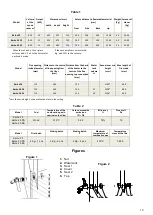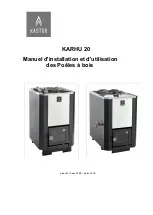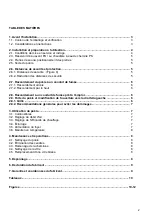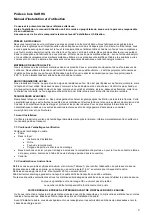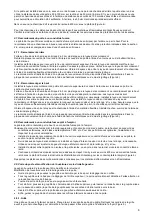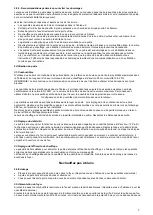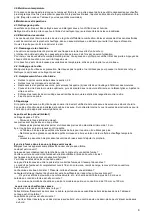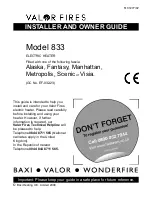
7
3. Using the heater
3.1. Fuels
Use only unprocessed wood in Karhu heaters, preferably chopped birch or alder (maximum amounts in Table 2). The length
of a single piece of firewood is approximately 35 cm. Dampness 12
–20%. NOTE! Damp or decayed wood does not provide
heat very well and emissions are higher.
The amounts of wood mentioned in Table 2 correspond to the values of a nominal output test in compliance with EN-
15821, where the volume of the sauna room is the maximum volume. Therefore, use a smaller amount of wood first to find
the suitable amount of wood for your sauna.
Do not exceed the amounts of wood mentioned in the Table.
The following materials are not allowed in the heater furnace: impregnated wood, wood containing nails, chip board, plastic,
plastic coated board or paper. Liquid fuels are not allowed, not even when starting the fire because of the risk of a flash fire.
Do not burn large amounts of small pieces of wood, such as chips or small pieces because of their high temporary heating
effect.
Firewood must not be stored immediately next to the heater. Pay attention to the safety distances.
3.2. Adjusting the air flow
The heater has been designed to perform best when the negative pressure of the flue is approximately
–12 Pa. If the
chimney is long, this optimal negative pressure limit may be exceeded. Adjust the draft and combustion air flow using a
damper so that it is suitable. Be careful of carbon monoxide. The damper must not be closed too far!
When lighting the fire, the door may be kept slightly open for a moment. The ash pan must be closed. It is not opened
during burning. Combustion air comes from another source. The ash pan has a catch to prevent opening, when there's fire.
3.3. Adjusting heating efficiency
The amount of wood when stoking determines the heating efficiency. Table 2 shows the correct amounts of wood which
guarantee burning in accordance with the CE marking.
The heating efficiency is up to the quality and the amount of fuel. Do not burn too long pieces of wood in the furnace.
Do not heat red-hot.
3.4. Lighting
•
Set the first batch of wood loosely into the furnace. (Maximum amount, refer to Table 2)
•
Add kindlings between the logs and light them.
•
You can keep the fire door open for a moment while the logs start to burn.
3.5. Stoking the furnace
Add the actual heating batch when the fire has nearly burned down to embers. (Maximum amount, refer to Table 2).
Add the wood lengthwise, similarly to the grate openings. Close the fire door.
Sauna is normally ready for bathing in 40 to 50 minutes, and it is not necessary to add more wood for one sauna bath.
3.6. Continuing heating
If the bathing session is longer, the conditions are cold etc., another batch of wood may be necessary for prolonged
heating. Once the first batch has burned down to embers, add more wood into the furnace parallel to the grate. (Maximum
amount, refer to Table 2)
4. Maintenance and repairs
4.1. Cleaning the heater
The surface of the heater may be cleaned with mild detergent and moist, soft cloth.
Clean the fire door glass with a soot cleaner agent (e.g. Noki Pois) available from hardware stores.
4.2. Removing the ashes
Excess ash will shorten the grate's life cycle and weaken burning. Remove only cold ash before starting the next heating, to
a metal bucket or similar to avoid risk of fire. Open the door to pull out the ash pan for emptying.
4.3. Chimney sweeping
The opening in the stone compartment is a soot hatch (covered with a cap).
The inner parts of the heater are cleaned through the soot hatch 2 to 6 times a year according to use.
For this, you need to empty the stone compartment. You can take the opportunity to check the condition of the stones. The
soot hatch will open by tapping the cap sideways.
If the cap has stuck because of temperature fluctuation, use a bending iron or a hammer.
4.4. Cleaning the heater glass
Handle the glass door carefully. Do not bang the door shut or use it for pushing wood into the furnace. Clean the glass with
Noki Pois or similar soot cleaning agent.


